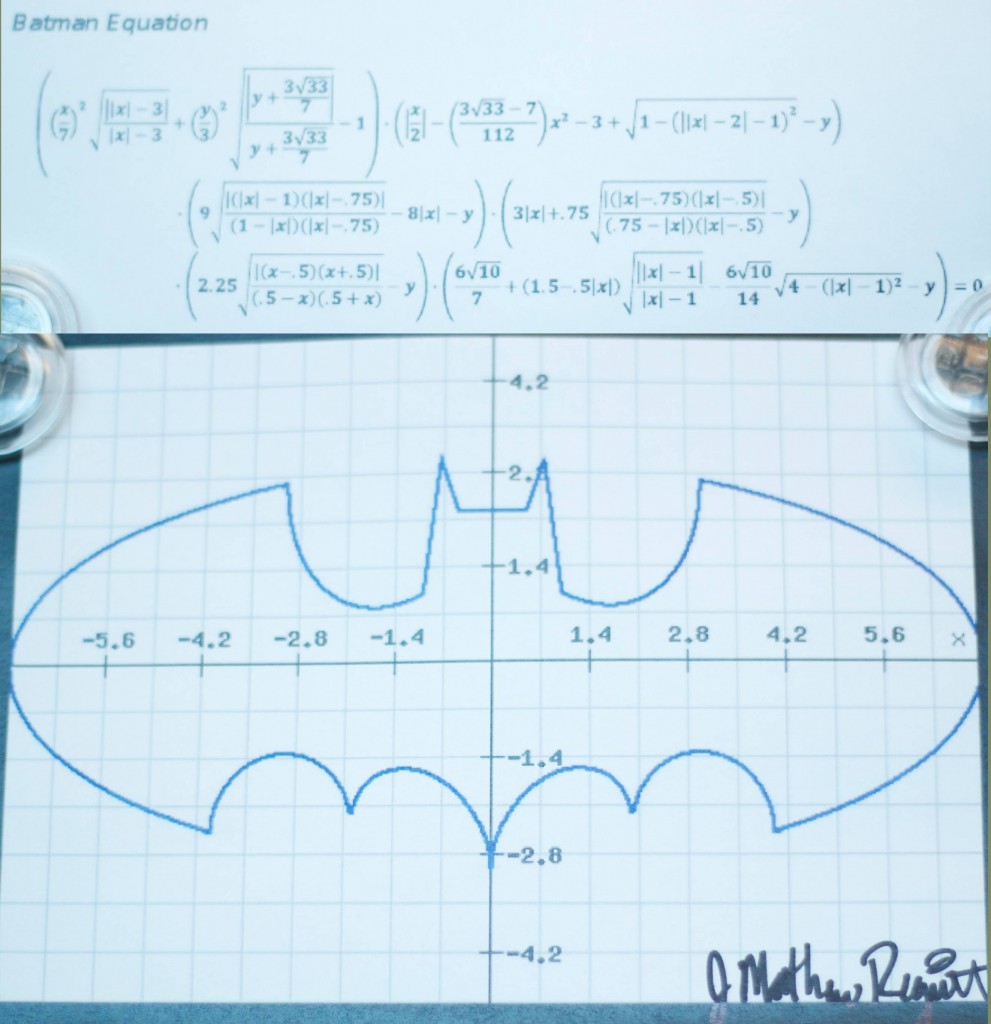You are using an out of date browser. It may not display this or other websites correctly.
You should upgrade or use an alternative browser.
You should upgrade or use an alternative browser.
The Batman Equation
- Thread starter Kayden
- Start date
Psi*
Tech Monkey
You remind me of a friend that we used to call the Steve 9000. He worked out an equation that took a 3 pages to solve with the result equaling his sister's birthday. It was his b'day present to her since he had no money or inclination to buy something for her.
The guy graduated from high school a year early AND graduated from an engineering school with a double major in math & electrical engineering and just one B in 3years ... a humanities class of course. He was not exactly Mr. Personality ... he was the Steve 9000
The guy graduated from high school a year early AND graduated from an engineering school with a double major in math & electrical engineering and just one B in 3years ... a humanities class of course. He was not exactly Mr. Personality ... he was the Steve 9000
2Tired2Tango
Tech Monkey
Well... at least now we all know why I don't much like math... or Batman.
Psi*
Tech Monkey
As a lady friend pointed out, the Kampyle of Eudoxus
That's used in a lot of eductor designs to accelerate a fluid then allow it to expand producing a low pressure zone to educt a secondary fluid - often of much less density (i.e. gas) for mixture, etc.
The shape is familiar - it looks like an hourglass - like my lady friend
That's used in a lot of eductor designs to accelerate a fluid then allow it to expand producing a low pressure zone to educt a secondary fluid - often of much less density (i.e. gas) for mixture, etc.
The shape is familiar - it looks like an hourglass - like my lady friend
marfig
No ROM battery
The shape is familiar - it looks like an hourglass - like my lady friend
LOL!
What's confusing me on that formula (I'm no major in math, so take it easy) is the equality sign. How do you plot something that equals 0? Aren't function graphs built from f(x) = y, or some variation of it?
On this case, I believe f(x,y) = z, where z stands for the formula above.


